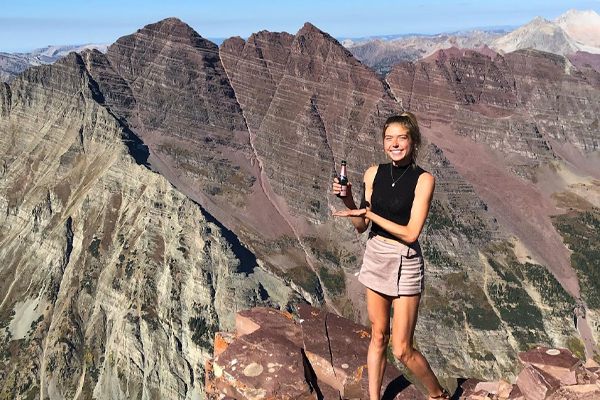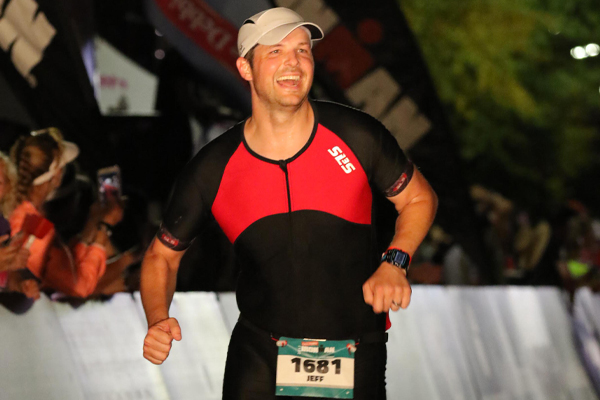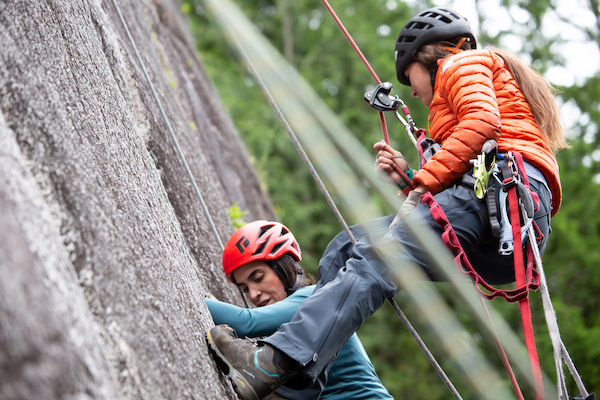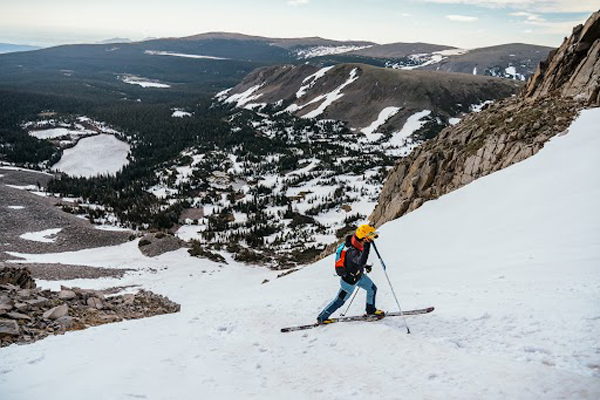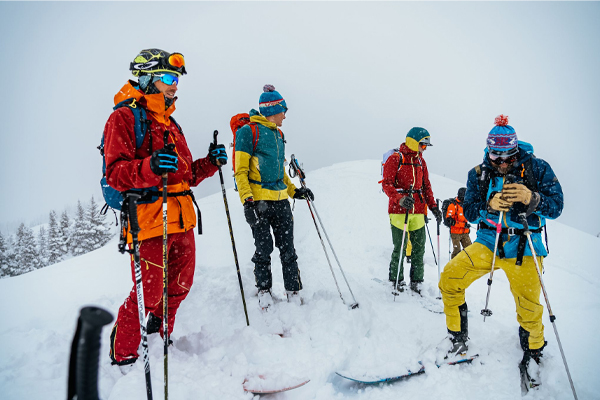For Your Mountain: Emmeline Wang
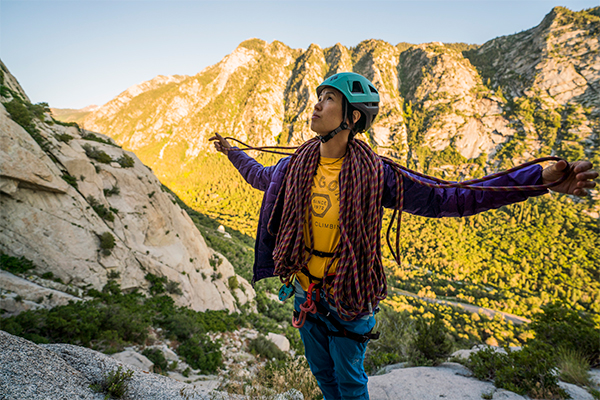
“Resilience, resilience, resilience…” Those were the words I kept uttering to myself when my body rebounded from the cocktail of anesthesia and painkillers I was given after getting splinted up at the Las Vegas trauma center.
On November 18th 2022, I was involved in a traumatic trad climbing accident in Red Rocks, Nevada, when a large piece of rock about half the size of my torso broke from underneath where I stood. As I was one move away from gaining the size 4 thunderbolt crack system, I felt a sudden jolt, or swoosh that felt like someone was ripping a carpet from under my feet. What went from a fun trad route quickly turned into a literal free-falling nightmare. On the way down, I felt and heard a “craaaack,” and before I could even understand what happened, I was flipped upside down. Completely aware and coherent the entire time, all I could think was, “Shit, my gear better catch, my piece better not blow.” After what felt like 20 seconds, my .75 cam was a bomber placement (thank god), my rope finally tensioned, and all the commotion finally stopped.
Looking down, I called out to my belayer that I would continue climbing, but as soon as my adrenaline subsided, I moved my left foot and immediately started feeling excruciating and burning pain in my ankle. After getting lowered from the route, I knew something was wrong. I moved my foot and saw it undulate and jiggle out of place. I just laid on the ground crying not because of the extreme pain, but because of the sudden unsettling thoughts that climbing may not be the same for me. Moments earlier, I was feeling at my strongest state, having a great time sending routes and hanging out with friends on a festive climbing trip. The situation quickly deteriorated into receiving on-site painkillers and being airlifted to the BLM fire station, eventually getting ambulated to the Las Vegas Trauma Center.
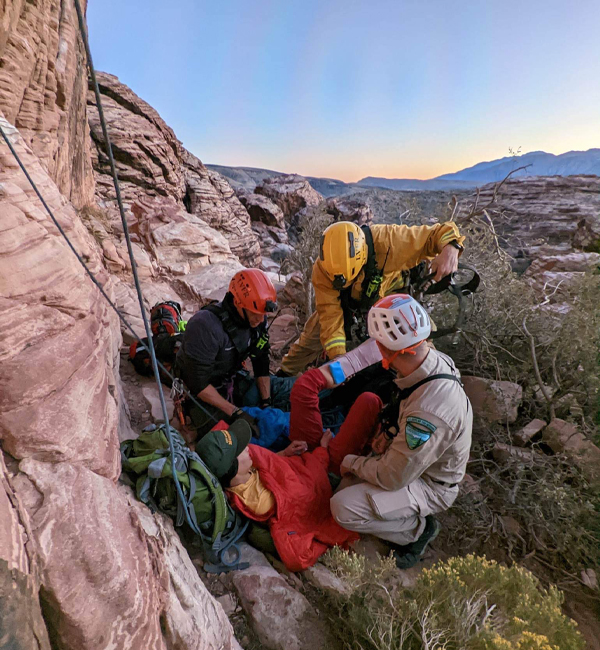
In the trauma center, I had already been under a cocktail medley of various medications — from fentanyl, ketamine, and a range of other ones I could barely pronounce. I could vividly hear the screams, the panic and the crying from other patients surrounded next to me. It’s definitely a place I’d never wish anyone to be in. After several hours of waiting entirely alone, my partner, unable to enter the premises due to the severity of other patient traumas and the center’s protocols, and multiple x-rays later, the orthopedic surgeon finally arrived with the news. I had an oblique fracture to my fibula, the syndesmosis ligament wholly torn, and numerous lateral ligaments busted — surgery was the only way for me to have any chance at healing. At that moment, I felt utterly alone, defeated, and ultimately hopeless.
—--
A week after the accident, I underwent surgery at my local hospital at the University of Utah (shoutout to my surgeon and amazing care team). During this recovery process, I experienced some of the darkest points in my life. From the literal pain I experienced a couple of days after my body rebounded from the anesthesia to the overall mental journey of feeling like I could’ve done something, anything, to prevent the accident from happening, it brutalized my mental health.
During my recovery, it forced me to sit and slow down and begin processing many of the internal thoughts and feelings I was experiencing. Self-doubt, judgment, shame, sadness, and depression were among the whole spectrum of emotions I experienced during this time. Irrational thoughts like, “Why would something like this happen when I was cruising up routes moments earlier?” to self-deprecating thoughts like, “How could you be so careless as a climber? You’ve been climbing for years and you just did something stupid like THAT?” to statements of extreme embarrassment like, “You literally just scared so many people at the crag with a stunt like that, great job, Emm,” rushed through my head.
As an athlete who explores the outdoors to find peace, solace, and even at times, to cope with whatever is happening in life, I was humbled to the point where this traumatic injury taught me how to just be. The human experience is joyous, sad, messy, beautiful, peaceful, stressful, and everything else in between. Without the mountains, the places where I feel most at home, I learned new meanings of what resilience actually represented. What I came to discover through this entire process is that resilience can mean so many different things when taking shapes and forms in how I coped and overcame many internal battles. Resilience meant having the courage to stand up even when I’ve been shaken and beaten down. Resilience most importantly meant giving myself the grace to feel every emotion that came up and meeting those emotions with patience and kindness. And lastly, resilience meant smiling through adversity and darkness.
Although these feelings of grief and pain at points in my process overcame and took over my mental health, sometimes even feeling too extreme to want to deal with, “resilience, resilience, resilience,” were the words I kept repeating to myself. Every morning when I woke up, every evening before I crutched my way up to bed, resilience is what kept me going and optimistic towards my road to recovery.
re·sil·ience -
1: the capability of a strained body to recover its size and shape after deformation caused especially by compressive stress
2: an ability to recover from or adjust easily to misfortune or change

Photo credit: Rachel Ross
- - -
ABOUT THE AUTHOR:
Emmeline Wang is a member of the La Sportiva Climbing Team


